#Amphibian aircraft
Text
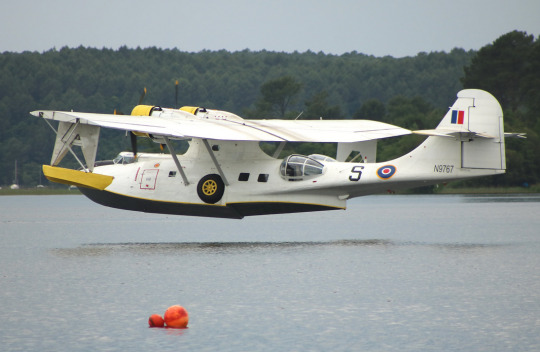
1943 PBY making a graceful arrival at the International Seaplane Meeting at Bisscarrosse, France
#Consolidated Vultee#PBY#Catalina#Flying boat#seaplane#vintage aircraft#Model 28#Amphibian aircraft#Aviation#airplane#Lake Bisscarrosse#Flying
297 notes
·
View notes
Photo

Martin M-130. Three AC built exclusvely for PAA. All were called 'China Clippers'
#Martin#M-130#airliner#airlines#passenger aircraft#commercial aircraft#Pan Ameican#flying boat#amphibian aircraft#China Clipper
102 notes
·
View notes
Photo
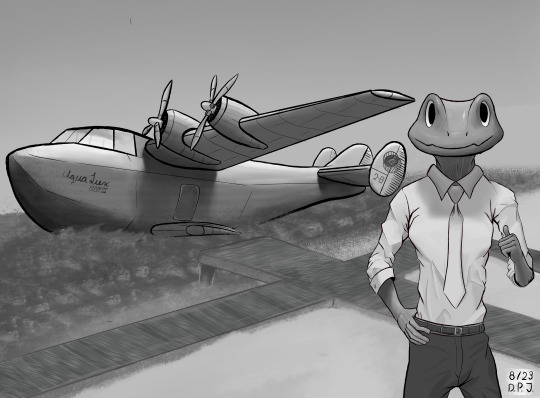
The air hopper
The latest and most luxurious in amphibious aeronautics.
I think I tried to bite off more than I could chew here. I tried to mix inking with digital painting, and it didn't end up as I was hoping. So I guess that's a sign that I should develop a process before committing myself to a project like this and make all of the decisions as I go.
Oh, and I don't know how to paint water and sand; I don't know why I decided that to be the background.
Posted using PostyBirb
0 notes
Text

2000 CESSNA TURBO 206H AMPHIBIAN. For sale.
#CESSNA#TURBO#AMPHIBIAN#Aircraft#Helicopters#Gliders#Schools#Jobs#Drones#Skydiving#Paragliding#Speedflying#Kiting
0 notes
Photo

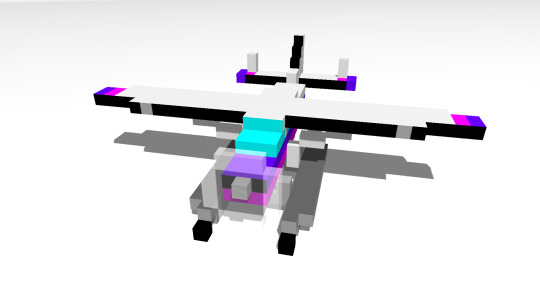

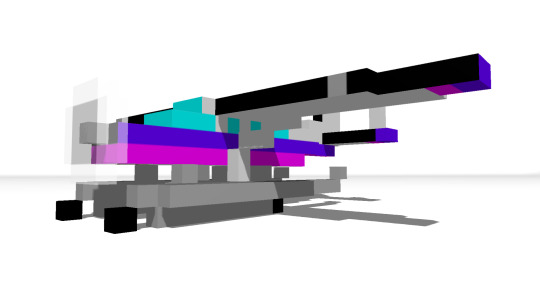


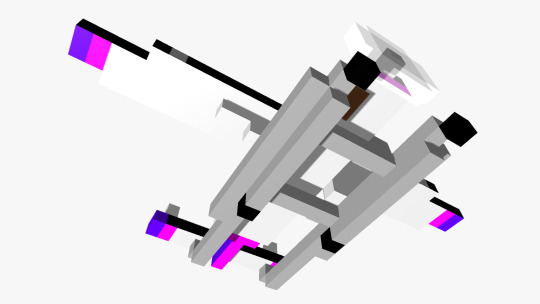



Model of the Cessna 208 Caravan Amphibian pixelated
Link to see more about this model on Turbosquid.com:
https://www.turbosquid.com/3d-models/cessna-208-amphibian-pixelated-3d-model-1912941?referral=amanitacz
Link to the whole gallery:
https://www.turbosquid.com/Search/Artists/amanitacz?referral=amanitacz
Link to the software:
http://www.cazaba.cz/
#graphic#computer graphics#amanitacz#cazaba#3d#model#3d model#TurboSquid#cessna#208#caravan#amphibian#aircraft#airplane#light#small#airliner#cargo#transport#travel#propeller#pixelated#pixel#art#pixel art#amphibious#general#aviation
0 notes
Text

Strange Symmetries #08: A Different Diplocaulus
With its bizarre boomerang-shaped skull, Diplocaulus is probably the most iconic ancient amphibian. (It even inspired the design of the pokémon Dragapult!) It was part of the lepospondyls, a diverse collection of early tetrapods mainly found in Europe and North America between the Early Carboniferous and the mid-Permian, about 350-270 million years ago.
But one species hung on a bit longer into the late Permian, about 259-254 million years ago, and this late-surviving lepospondyl was perhaps the oddest of them all.
Diplocaulus minimus was the only lepospondyl known from the supercontinent of Gondwana, found in what is now Morocco in northern Africa. About 70cm long, around half of which was its long tail, it had the distinctive elongated skull of a diplocaulid – but in a bizarrely asymmetrical shape.
The left prong of its skull was long and tapering, but the right was shorter and more rounded. This doesn't seem to have been due to individual deformity or distortion of the fossil material, since more than one skull has been found with the same features, but the reason for such a striking amount of asymmetry in this species is unknown.
Diplocaulids' head shapes are thought to have acted as hydrofoils, providing lift while they were swimming. Perhaps Diplocaulus minimus' much more wonky skull means this species wasn't relying on that hydrodynamic function as much as its relatives, and something else was going on with its ecology.
…Although, that weird head does bear a surprising resemblance to a proposed asymmetric "flying wing" aircraft design from the 1950s, so it might have worked better for underwater flight than it seems at first glance.
———
NixIllustration.com | Tumblr | Twitter | Patreon
#science illustration#strange symmetries#paleontology#paleoart#palaeoblr#diplocaulus#diplocaulidae#nectridea#lepospondyli#amphibian#tetrapod#art#good job you funky little tetrapod#concept for a weird regional/paradox dragapult right here
435 notes
·
View notes
Text
Animal of the Day!
Whooping Crane (Grus americana)
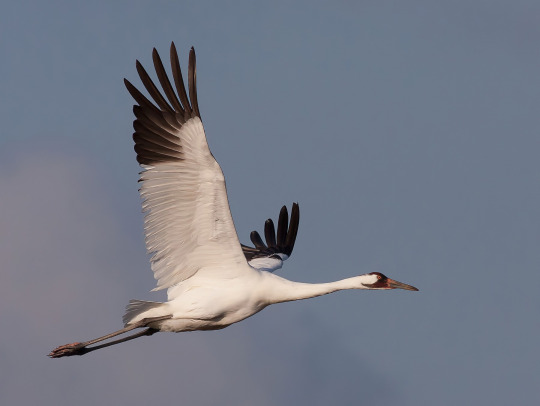
(Photo by Tom Johnson)
Conservation Status- Endangered
Habitat- Central North America
Size (Weight/Length)- 7 kg; 150 cm
Diet- Mollusks; Amphibians; Insects; Crustaceans; Berries; Fish; Small mammals
Cool Facts- Being only one of the two species of crane in North America, the whooping crane has done the remarkable. Whooping cranes were almost pushed to extinction by 1941. Mass hunting throughout the 1800s resulted in thousands of the birds being shot for feathers, trophies, and museum specimens. By 1941, there were only 21 wild adults and two captive ones. In 1960, the National Audubon Society stepped in and pushed the whooping crane’s story into national spotlight and resulted in their placement on the Endangered Species List. Through captive breeding and habitat restoration, whooping crane numbers have increased to over 800 wild individuals. Today, these monogamous birds can be seen hunting on mudflats and migrating over 4,000 kilometers from their feeding to breeding grounds.
Rating- 13/10 (Learns how to migrate through the use of ultralight aircrafts.)
#animal of the day#animals#birds#cranes#friday#july 14#whooping crane#biology#science#conservation#the more you know
97 notes
·
View notes
Text

Chinese Navy Fujian aircraft carrier advances with J-35 stealth fighter tests
Fernando Valduga By Fernando Valduga 12/13/2023 - 12:15 in Military
The recent progress of the Chinese Navy is evident in the Fujian aircraft carrier, Type 003 model, including tests with the J-35 stealth jet.
The tests include electromagnetic catapults with two red vehicles and an aircraft similar to the J-35 stealth fighter on deck, as reported by passengers flying over the aircraft carrier.
Chinese media sources released new photos depicting Fujian's activities, including the J-35 stealth fighter, initially identified from low-resolution images and later confirmed in sharper images. This aircraft is probably the first to undergo electromagnetic catapult tests in Fujian.

The J-35 is a next-generation multifunctional poaching fighter, developed by China as an improved and combat-ready version of the FC-31, an aircraft carrier-based fighter. Scheduled to debut in 2021, the J-35 is a collaborative effort led by the Chinese Aeronautical Establishment, AVIC's Shenyang Aircraft Research and Design Institute and the 29º Chengdu Research Institute of China Electronics Technology Group Corporation.

The FC-31, predecessor of the J-35, debuted in 2012. However, China has never mass-produced it, mainly due to inexperience in the manufacture of jet engines. The FC-31 is equipped with Klimov RD-33 engines, the same as those used in Russia's MiG-29 aircraft. China has faced challenges in the design of high-performance turbofan engines with post-combustion, especially in metallurgy, although it has made significant progress in other aircraft components.

The J-35 meets the urgent need of the People's Liberation Army Navy for a stealth fighter capable of operating from future aircraft carriers. This is partly a response to the U.S. F-35B and F-35C stealth fighters developed for amphibian assault ships and aircraft carriers.
After the inaugural flight of the J-35 in 2021, it is expected to undergo about five years of testing before active service. As the FC-31 has been tested for many years as a technical demonstrator, this testing period may be reduced, according to Chinese defense experts.

Chinese J-35 stealth jet.
Satellite images from November 2023 indicated that Fujian temporarily left its pier, suggesting an imminent maritime test. With a displacement of almost 80,000 tons, the aircraft carrier can accommodate more than 20 aircraft, such as the J-35 twin-engine jet.
In addition to the J-35, other aircraft scheduled for testing include the KJ-600 early air alert aircraft and the Z-20 utility helicopter, which has already been widely deployed in several Chinese military branches. The KJ-600, crucial for aircraft carrier combat capability, will probably follow the J-35 in the test sequence. Unmanned aerial vehicles are also on the testing agenda, with a forecast to be tested after the J-15T and Z-20.
Tags: Military AviationPLAN - People's Liberation Army Navy / People's Liberation Army Navyaircraft carrierShenyang J-35
Sharing
tweet
Fernando Valduga
Fernando Valduga
Aviation photographer and pilot since 1992, has participated in several events and air operations, such as Cruzex, AirVenture, Dayton Airshow and FIDAE. He has work published in specialized aviation magazines in Brazil and abroad. Uses Canon equipment during his photographic work in the world of aviation.
Related news
HELICOPTERS
Lockheed Martin tests electronic warfare system transported by helicopter
13/12/2023 - 11:00
The original number of bombers would have difficulty fulfilling conventional and nuclear missions in a great war.
MILITARY
How many B-21 bombers will the U.S. need? Experts say more than 100
13/12/2023 - 08:51
ARMAMENTS
Taiwan expands F-CK-1 fighter arsenal with new missile
12/12/2023 - 22:46
MILITARY
RAF activates second F-35 squadron in Marham
12/12/2023 - 22:23
MILITARY
Safran partners with the Egyptian Air Force to improve the performance of the Rafale fleet
12/12/2023 - 16:00
HELICOPTERS
Airbus delivers two more H225M helicopters to the Hungarian Defense Forces
12/12/2023 - 14:00
5 notes
·
View notes
Text
Who asked for EI phobias, no one? Here they are anyway:
Toast:
Thalassophobia- sea/ocean/open water
Cynophobia- dogs
Lupophobia- wolves
Claustrophobia- enclosed spaces/having no escape/being closed in
Astraphobia- thunder and lightning
Gavin:
Frigophobia- becoming too cold
Mycophobia- fungus
Chemophobia- chemicals
Ghost:
Orithophobia- birds
Acrophobia- heights
Older men- Androphobia or Gerontophobia
Aphenphosmphobia- being touched
Body dysmorphic disorder- obsession with real or imaginary body defect
Jimmy:
Older men (pretty much just toilet toucher)- Androphobia or Gerontophobia
Zymarikaphobia- pasta (canonically fears macaroni and has nightmares of it eating him)
Colon:
Trypophobia- holes/textures w/ pattern of holes
Chiroptophobia- bats
Emetophobia- vomiting
Spooker:
Hemophobia- blood
Panphobia- everything/constant fear of unknown cause
Cj:
Aphenphosmphobia- being touched
Atychiphobia- failure/negative evaluations of others
Enchlophobia- crowds
Gelotophobia- being laughed at
Musophobia- mice/rats
Alex:
Dendrophobia- trees
Lepidoterophobia- butterflies and moths
Submechanophobia- partially/fully submerged man-made objects
Suzannah:
Arachnophobia- spiders, scorpions, and other arachnids
Belonephobia- needles or pins
Equinophobia- horses
Toxiphobia- being poisoned
Zoé:
Apiphobia- bees
Coimetrophobia- cemeteries
Gephyrophobia- bridges
Lilasophobia- tornadoes or hurricanes
Tim:
Automatonophobia- lifelike robots/animatronics/wax figures etc
Cibophobia- aversion to food (synonymous with anorexia nervosa)
Frigophobia- becoming too cold
Ranidaphobia- frogs
Thanatophobia- dying
Toast Sr.:
Orithophobia- birds
Trypanophobia- needles/injections
Tomophobia- invasive medical procedures
Tiphaine:
Aerophobia- aircraft/flying
Emetophobia- vomiting
Myrmecophobia- ants
Bronson:
Ailurophobia- cats
Gelotophobia- being laughed at
Lilapsophobia- tornadoes/hurricanes
Johnson:
Coimetrophobia- cemeteries
Coulrophobia- clowns
Hippophobia- horses
Peewee:
Dentophobia- dentists
Entomophobia- insects
Masklophobia- people in masks/costumes/mascots
Ernie:
Alliumphobia- strongly scented allium genus (garlic, onions, chives, shallots)
Bacteriophobia- bacteria
Ophidiophobia- snakes
Spheksophobia- wasps
Ana:
Agoraphobia- open spaces
Astraphobia- thunder and lightning
Hypochondria- illness
Lepidopterophobia- butterflies and moths
Tom:
Eisoptrophobia- mirrors/seeing one's reflection in a mirror
Herpetophobia- reptiles/amphibians
Ichthyophobia- fish (includes eating fish and dead fish)
Angus:
Atychiphobia- failure/negative evaluations of others
Autophobia- isolation
Body dysmorphic disorder- obsession with real or imaginary body defect
Enchlophobia- crowds
Gelotophobia- being laughed at
Thanatophobia- dying
Jackie:
Achluophobia- darkness
Aerophobia- aircraft or flying
Coulrophobia- clowns
Globophobia- balloons
Chase:
Alektorophobia- chickens
Aichnmophobia- sharp/pointed objects like needles/knives
Masklophobia- people in masks/costumes/mascots
Phonophobia- loud sounds or voices
Henrik:
Frigophobia- becoming too cold
Helminthophobia- worms
Mysophobia- germs/contamination/dirt
Taphophobia- graves or being placed in one while still alive
Marvin:
Atelophobia- imperfection
Atychiphobia- failure/negative evaluations of others
Ecophobia- cataclysmic environmental change
Haphephobia- being touched
Eisoptrophobia- mirrors/seeing one's reflection in a mirror
Jameson:
Aichnmophobia- sharp/pointed objects like needles/knives
Melissophobia- bees
Necrophobia- death or the dead
Pupaphobia- puppets
Shawn:
Pyrophobia- fire
Enochlophobia- crowds
Scopophobia- being looked/stared at
(if you want me to explain certain ones, I'd be willing too)
1 note
·
View note
Text
BIRD BLOG TIME FUCKERS
Okay so I have no clue how I'm gonna do this, I assume a format will arise as I go. But right now it's 3AM and I wanna talk about my favorite little birds: the Whooping Crane.
The Whooping Crane is one of the only two crane species native to North America, the other is the Sandhill Crane. (WE'LL GET INTO THOSE GUYS LATER I LOVE THEM TOO)
Anyway Whooping Cranes look like this:
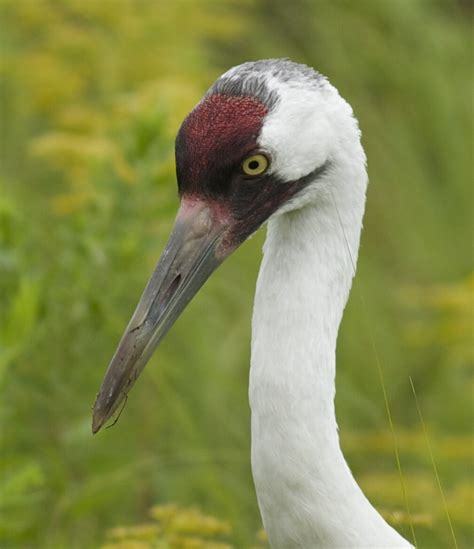

LOOK AT THAT AND TELL ME THEYRE NOT SO CUTE???

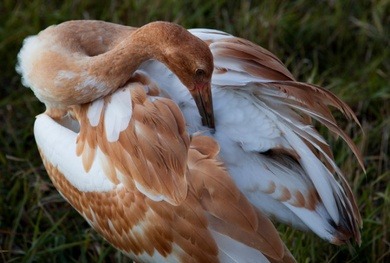
Appearance:
You can identify adult Whooping Cranes by their white feathers and patch of red on their head, which goes from their beaks to their cheeks! This patch of red is actually skin and isn't very feathery. They have long, pointed beaks, usually a gray color as you see above. They have yellow eyes and long, thin legs. I've also seen that these cranes often have the tips of their wings black.
Immature cranes have the same long beak and thin legs, but instead of white feathers, have a tan, cinnamon-brown coloring and no red spot. As they age, their white feathers come in, so the more brown feathers they have, the younger they are.
Did I mention that Whooping Cranes are really big? Because Whooping Cranes are BIG
The average height of these guys is approximately five feet (range of 4'1" to 5'3" from what I've seen) when they stand up straight, making them the biggest birds in North America. Their wingspan is 7.5 feet on average, though despite their massive height and wingspan, Whooping Cranes weigh roughly 15 pounds.
Habitat:
Whooping Cranes live in marshes, wetlands, fields, anywhere wet and grassy. They breed in the upper Midwest and around northwest Canada, and migrate south to the Gulf Coast, around Mexico.
I should also mention that Whooping Cranes are very endangered as a species. In the 1940s, due to overhunting and habitat loss, there was once only 21 Whooping Cranes alive—15 migrate birds in Canada/Texas, and 6 that lived year-round in Louisiana.
With human intervention, the species has now risen to a population of roughly 800 (I found an exact number of 836, but can't speak for its accuracy).
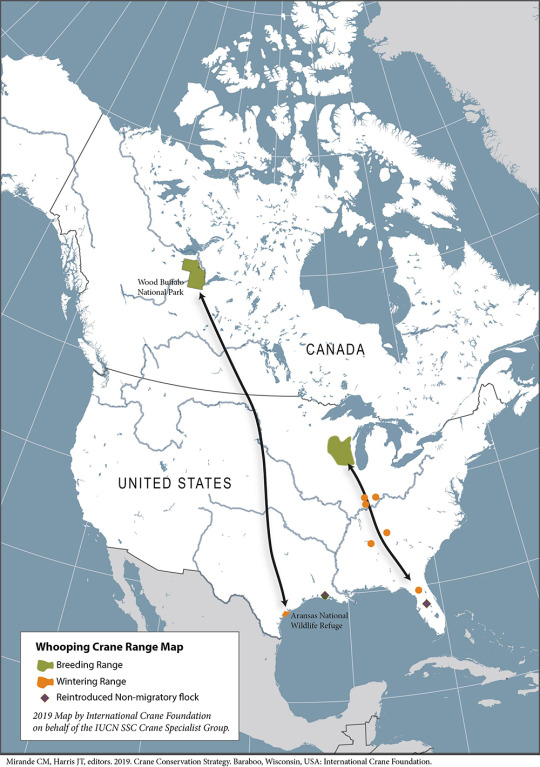
Here's a migration map I took of off savingcranes.org (please visit them, they're so cool)
Diet:
Whoopers (I saw someone call them that) ate omnivores, eating a mix of insects, amphibians, crustaceans, reptiles, and small fish and mammals. They'll also eat grain, marsh plants, plant tubers, and acorns.
Fun Facts:
Whooping Cranes' call sounds like a squeaky door. People will try to tell you it's this majestic, one-note mating call, but it is a door hinge that needs some WD-40. Here's a few videos on what they sound like :)
( https://youtu.be/NFzkXdZjQJM
https://youtu.be/8EobJR_jkjs )
Because of how Whooping Cranes almost went extinct, biologists had used aircrafts to teach young cranes how to migrate. (Here's an article on it: https://www.npr.org/2016/03/02/468045219/to-make-a-wild-comeback-cranes-need-more-than-flying-lessons)
They mate for life! They search for a mate at around 2-3 years, and then mate for life. They'll also continuously return to the same nesting and wintering territories. However, should their original mate die, they'll find another mate.
It's late, otherwise I would do more😭
Sources:
https://www.audubon.org/field-guide/bird/whooping-crane
https://savingcranes.org/learn/species-field-guide/whooping-crane/
https://www.nwf.org/Educational-Resources/Wildlife-Guide/Birds/Whooping-Crane
https://www.allaboutbirds.org/guide/Whooping_Crane/?_gl=1*10vkxuh*_ga*OTQ5Mjc2MzYyLjE2ODg1NDEwODY.*_ga_QR4NVXZ8BM*MTY4ODU0MTA5NS4xLjEuMTY4ODU0MTEyNC4zMS4wLjA.&_ga=2.29534207.1501623720.1688541086-949276362.1688541086
https://abcbirds.org/bird/whooping-crane/
I highly recommend checking these sites out, not just for Whooping Cranes, but for other birds.
3 notes
·
View notes
Photo

Nest Seekers celebrates end of summer with Hamptons soiree
Flying high above Shelter Island, Nest Seekers’ James Giugliano scoped out a 1.1 acre lot on Nostrand Parkway from the window of a Caravan Amphibian seaplane. On the parcel below stands a three-bedroom colonial house, priced at just below $6 million, with views overlooking the Shelter Island Sound. With him on the eight-seater aircraft were […] The post Nest Seekers celebrates end of summer with Hamptons soiree appeared first on The Real Deal.
https://therealdeal.com/new-york/tristate/2023/09/03/nest-seekers-celebrates-end-of-summer-with-hamptons-soiree/
1 note
·
View note
Text

Piper PA-18 float plane at Lake Lucerne, Switzerland
72 notes
·
View notes
Text
Plovers are a species of wading birds known for their large, round, black-and-white wings and light-colored undersides. These birds play an important role in their natural ecosystems, foraging for food alongside many types of amphibians, reptiles, and other small creatures.
Recently, though, these birds have been receiving a lot of attention from another field: aviation. Plovers have been found nesting around airfields and runways around the world, and the United States Air Force has been experimenting with using them as “bomber birds”.
So why are plovers being used as bombers? The answer comes down to their size. Plovers are small and lightweight enough to fly around an airfield and avoid the wake of a low-flying aircraft. Plus, the birds’ remarkable agility and ability to navigate complex areas (without being affected by crosswinds) make them perfect candidates for aerial reconnaissance and mapping missions.
Finally, plovers are able to fly at night, meaning they can be used for nighttime operations without being spotted by human observers. All of this means that plovers have become attractive to the Air Force as a cheap, stealthy way to get a job done.
The Air Force has recently harvested the birds from breeding grounds, sized them, and placed them in bright yellow vests. Once the vests are in place, the birds can fly around a target area and deliver instructions to the bomber pilots. The bright vests also make it easy for pilots to identify the plovers and track their progress.
It’s a remarkable concept, and one that relies on the unique abilities of plovers. Thanks to these birds, the Air Force now has a cheaper, smarter way to perform surveillance and reconnaissance operations.
0 notes
Text
The Pivotal Amphibious Assault in WWII’s Battle of Tarawa

One of the early US military operations of World War Two, the Battle of Tarawa, took place in November 1943. This assault was part of Operation GALVANIC, an invasion of the Gilbert Islands. The Navy and Marine Corps operation on Betio Island, Tarawa Atoll was coordinated with an Army assault on the Makin Atoll. The timing and coupling of the two was intended to secure Lines of Communication to Hawaii, and to eliminate Japanese garrisons to the east of the Marshall Islands. The operations also served an important stepping stones toward an even larger invasion of the central Pacific’s Japanese-occupied Marshall and Marianas island chains. These Operations were envisioned and described in War Plan Orange, one of the inter-war 'Rainbow Plans,' and often referred to as Island Hopping (towards Japan).
Japanese forces on the Tarawa Atoll were concentrated on Betio Island. The Japanese defenses were the most integrated and fierce as any the Allied Forces would encounter in WW2. The Japanese claimed "it would take a million men a hundred years to take Tarawa." On 20 November 1943, the 2nd Marine Division, spearheaded by 2d Marine Regiment in 2d Amphibious Tractor Battalion LVTs, crossed the Line of Departure in three assault waves on the heavily fortified and coral reef-protected northern lagoon side. The objective was an airfield on the thin island’s southwest corner that would bring the Marshall Islands, 550 miles westward, into the Seventh Air Force’s reconnaissance aircraft and heavy bomber range.
From the start, sustainment issues plagued the attack. Moreover, US forces had a narrow frontage in which to assault. Factor time was unforgiving as D-day for the pending Marshall Islands invasion was eight weeks out. GALVANIC could not be delayed, not even a week. Thousands of Japanese Special Naval Landing Forces (Rikusentai) were dug into Betio in mutually supporting positions. However, before the Marines could take on these elite warriors, they had to breach the formidable coral reef. Enabled by Landing Vehicles Tracked (LVT), they did. When a Japanese defender saw the Marine vehicles climb and cross the coral reef, he exclaimed, "the Gods of death have come!" Indeed they had.
As aforementioned, the November 20-23 assaults were carried out by amphibious tracked landing vehicles as well as traditional landing craft like the Landing Craft Vehicle Personnel (LCVP). However, an unusually persistent low tide prevented conventional flat bottomed landing craft from breaching the reef line, and halted reinforcement and resupply. Instead, Infantry Marines embarked on the conventional landing craft had to disembark, crawl across the jagged coral, and wade to the beach under withering and interlocked artillery and heavy machine gun fire. Many never made it ashore and remain Missing in Action. Despite knowing the horror they faced on Betio, the Amtrac, or Alligator, Marines made multiple trips to the reef and Amphibious Shipping in circuits to ensure Infantry and supplies made it to the island. Of the 125 LVTs, or Amtracs, employed in the battle, only 19 remained at the end of the fighting on "Bloody Tarawa." It was, as Colonel Joe Alexander USMC (Ret) described in his book by the same name, 'Utmost Savagery."
The ferocity of the Japanese resistance was unprecedented at the time, and served as a wake-up call to the American public and the military top brass. 1,009 Marines were killed and 2,101 wounded in combat operations. The Japanese lost 4,690 soldiers. Only 17 were captured alive. At the same time, the battle served as a crucial test of an emerging amphibious assault doctrine that required a complex blending of sea-land logistics and firepower.
Many of the critical components of the doctrine were in place and tested during the battle. Several specialized amphibious units were arrayed, including an amphibian tractor battalion, combat engineers, shore fire control teams, and a shore party for handling cargo. A naval construction battalion, the Seabees, was also deployed, with the only significant missing component, underwater demolition teams. These underwater swimmers (ultimately Navy Seals and Marine Force Reconnaissance) would have enabled stealthily reconnaissance of the reef, beach, and surf conditions before landing.
However, many lessons were learned in the cauldron of war. For example the Marines lacked waterproof radios, and later corrected this. The Navy and Marines identified a requirement for a dedicated Naval amphibious command ship as the guns of the combatant vessels used for Command and Control knocked out the radio networks every time the ships fired. By the time of the Marshalls' campaign, smaller command vessels, AGCs, were in place. Today, amphibious doctrine identifies the requirement for Primary and Secondary Control ships during amphibious operations. The US Navy currently maintains two Amphibious Command and Control ships (LCC) that are widely relied upon by 6th and 7th Fleets. Another battle innovation was the backpack flamethrower, which was ultimately integrated into LVTs and vehicles known as "Zippo tanks” during later Pacific campaigns.
Despite the carnage, documented by Marine Combat Cameramen in the 1944 Academy Award winning Documentary, 'With the Marines at Tarawa,' it did not take a million men a hundred years to take Tarawa. 16,000 Marines took Tarawa in 3 Days. Tarawa’s seizure demonstrated the validity of American amphibious doctrine, which held that even the most heavily fortified island could be expeditiously seized.
0 notes
Text
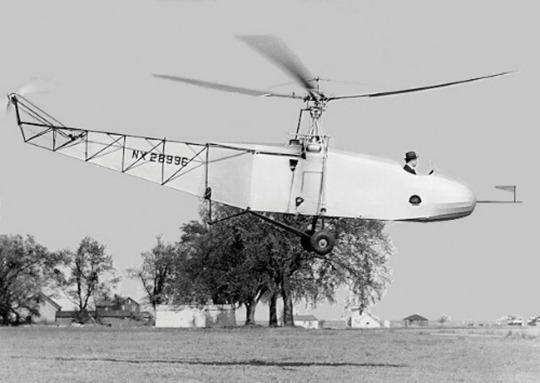
alright time to look at helicopters, specifically at this point history how did the big oval with a propeller on it’s head come to be.
September 14, 1939, 12 days after the beginning of the second world war, the economy was still recovering from the depression back in the 20′s, Team fortress 2 was still a good 68 years off, things sucked, however even back then there were still smaller victories to look forward to, designed by Igor Sikorsky and built by the Vought-Sikorsky Aircraft Division of the United Aircraft Corporation, the helicopter was the first to incorporate a single main rotor and tail rotor design. Piloted by Sikorsky, the September 14 tethered flight lasted just a few seconds. The first free flight took place on May 13, 1940. The innovative 28-foot diameter, three-blade rotor allowed for variable pitch of the blades with a blade speed of 250 to 300 mph. The concepts demonstrated in the VS-300 provided the basis for the first production helicopters and became the standard for helicopter manufacturing across the world. On June 27, 1931, Sikorsky submitted a patent application (no. 1,994,488) for a direct lift aircraft, which included all the major engineering features of the VS-300. The patent was granted on March 19, 1935. Presented to Henry Ford and included in his Edison Museum in Dearborn, Michigan, on October 7, 1943, the VS-300 today remains on display at the Henry Ford Museum.
Igor himself was someone well known for his innovations and designs such being used on the twin-engined S-38 amphibian aircraft. and heavy and design involvement with the take off of the first helicopter, as for where the the model took off.
Located on Long Island Sound, the Fairfield County town of Stratford is bounded by the Housatonic River on its eastern border. Europeans settled the area known as Cupheag, or harbor, in 1639 and later named it Stratford. Its original lands included what eventually became Trumbull, Shelton, Monroe, and parts of Bridgeport. Early industries included oystering and shipbuilding. With the advent of the industrial age, manufacturing became an economic mainstay and Stratford today still produces an array of goods, from chemicals, electrical parts, and hardware to plastics and paper products. It is best known, however, as the birthplace of the American helicopter industry built on the pioneering work of Igor Sikorsky.
World's first helicopter – Today in history: September 14 - Connecticut history: A cthumanities project (2021) Connecticut History | a CTHumanities Project - Stories about the people, traditions, innovations, and events that make up Connecticut's rich history. Available at: https://connecticuthistory.org/worlds-first-helicopter-today-in-history/ (Accessed: February 16, 2023).
Igor Sikorsky dies – Today in history: October 26 - Connecticut history: A cthumanities project (2020) Connecticut History | a CTHumanities Project - Stories about the people, traditions, innovations, and events that make up Connecticut's rich history. Available at: https://connecticuthistory.org/igor-sikorksy-dies-today-in-history/ (Accessed: February 16, 2023).
Stratford - Connecticut history: A cthumanities project (2011) Connecticut History | a CTHumanities Project - Stories about the people, traditions, innovations, and events that make up Connecticut's rich history. Available at: https://connecticuthistory.org/towns-page/stratford/ (Accessed: February 16, 2023).
0 notes
Text
Wilderness Safaris Botswana

Wilderness Safaris has recently launched a brand-new biodiversity surveillance program. This effort focuses on picked teams of invertebrates, little mammals, amphibians, as well as fish. In the last two years, the group has refined over 1300 monitorings, determining over 451 types. The results will certainly aid researchers keep track of the wellness as well as diversity of the nation's wildlife. The firm has actually 26 camps spread out across Botswana. The camps are environment-friendly and also focus on sustainable
tourism and conservation. The 4Cs ethos, which emphasizes commerce, culture, as well as preservation, is central to the Wild Safaris philosophy. Wild Safaris concentrates on conserving the environments and biodiversity of their wild areas. Their camps are made in such a way that maintains the natural beauty of the location and values the pets and their habitats. Discover more on the best botswana safaris services on this page.
Many Wilderness Safaris camps lie on private giving ins. Activities include video game drives, bush strolls, and evening drives. Some of these camps are located deep in the Okavango Delta as well as are only accessible during high season. Some camps have light airplane to link visitors with the wilderness, while others offer accessibility to hubs or onward links. Light aircraft transfers provide guests a fresh viewpoint on the landscape, which supplies fantastic photo ops. Along with the camps, Wilderness Safaris operates 6 Adult Empowerment Clubs in Kenya. The clubs are comprised of local adults that take part in diverse income-generating projects. A few of the income-generating tasks include beekeeping, knitting, and also timber carving. The program is designed to urge individuals to live a much better life and also assist the setting. Discover more on the excellent zambia safaris today.
The Makgadikgadi Desert is house to various types of pets. It complements the typical game-rich areas of Botswana. Numerous predators are commonly seen here. The completely dry savanna area attracts lots of gemsbok, newborn calf bones, and also red hartebeest. You can additionally find black-backed jackal and also cheetah in the area. Some wilderness safaris offer private tasks for families. The Little Tubu camp, which opened in 2013, is excellent for six visitors as well as has a timeless safari ambiance. The various other camps include Jao Camp, which is set amidst lush bush heaven. And Pelo Camp, which lies on a heart-shaped island. The Okavango Delta is positioned in the northwest edge of Botswana and is the world's biggest inland delta.
The Okavango River branches over the Kalahari Desert and forms a series of shallows and islands. The water gets to the Delta's waters between June as well as November, developing abundant soil as well as a picturesque environment-friendly setting. At Vumbura Plains Camp, visitors enjoy a variety of tasks that occur on land as well as in the water. They can select to go through the scenic surroundings or take place evening drives to detect nighttime pets. On top of that, they can delight in the luxury of an elegant safari camp and a health spa treatment. Linyanti Wild animals Book is house to abundant wild animals, consisting of elephants that expand to enormous numbers throughout the dry winter season.
Various other varieties of game are additionally numerous as well as there is sufficient chance to identify killers, consisting of lion, leopard, and identified hyena. Birding is likewise spectacular, and also day game drives are performed in open 4x4 Land Cruisers. During the cold winter season, warm water containers are provided for guests to warm up. For more information about this topic, click here: https://en.wikipedia.org/wiki/Wilderness_Safaris.
0 notes